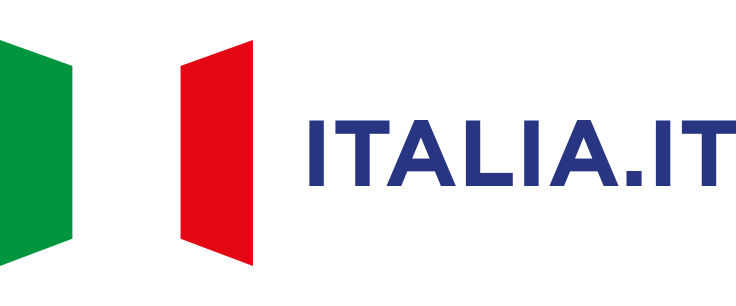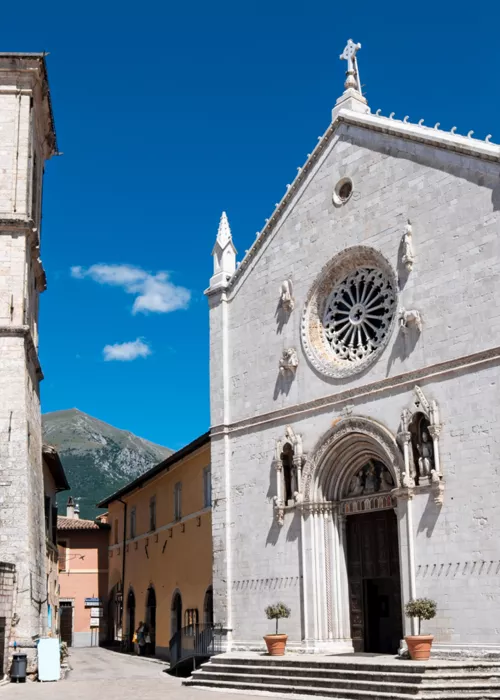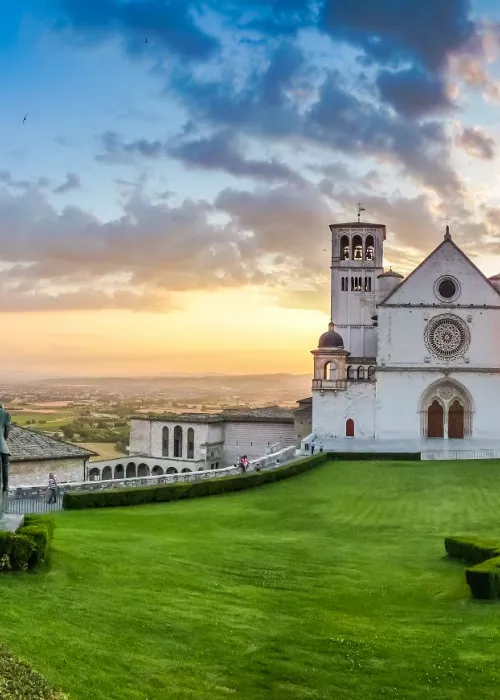Umbria: The Way of Saint Benedict
3 minutes

From Norcia to Montecassino: the Cammino di San Benedetto runs for about 300 km, retracing in 16 stages the Saint's life between Umbria and Lazio, from his birthplace to the abbey where he founded his famous Rule based on the precept ‘ora et labora’ (pray and work). The walk, surrounded by the unspoilt natural landscapes of central Italy, medieval villages and religious buildings, offers a unique experience of reflection, exploration and good food.
Norcia, the cradle of Saint Benedict

Norcia, together with Assisi and Cascia, is one of the towns most emblematic of Umbria’s spiritual side. The town of Norcia, the birthplace of Saint Benedict and his sister, Saint Scholastica, is a destination for the faithful, a pilgrimage site and the starting point of the Cammino di San Benedetto. Set in the heart of the Sibillini Mountains and surrounded by enchanting natural landscapes in which dense mountain forests alternate with gentle cultivated hills, Norcia is a treasure trove of history, art and culture. The Basilica of San Benedetto, built on the remains of the Saint's birthplace, is now being rebuilt after the dramatic earthquake that devastated it in 2016, but it continues to be the spiritual hub of the city and the ideal point from which to take your first steps on this journey.
Cascia, home of Saint Rita

Cascia is a deeply spiritual place and a picturesque village where you can stop and contemplate symbolic places of reflection such as the Monastery of Santa Rita. The village, perched on a hill, offers breathtaking panoramic views of the surrounding valleys, immersing the travellers in an atmosphere of peace and serenity.
You cannot leave Cascia without visiting Roccaporena, the ‘Sacred Rock’ where Santa Rita was born, located at the bottom of a small gorge carved out by the Corno River. You can reach the top of the cliff by walking 300 steps up a via crucis (‘way of the cross’). Reaching the top, you will sense the profoundly spiritual atmosphere of the place and the beauty of the landscape embracing everything from the Sibillini Mountains, to the north, to the Monti Reatini, to the south.
Monteleone di Spoleto, a medieval village in the mountains

The next stop is Monteleone di Spoleto, one of Umbria’s most charming villages, situated at an altitude of over 1000 metres. This small medieval village, rich in history and tradition, offers a warm welcome to travellers.
The symbol of the village is the Porta dell'Orologio gate under the clock, but its jewel is undoubtedly the famous biga parade chariot, an extraordinary product of Etruscan workshops dating from around 540 BC.
Points of interest are the Church of San Francesco, with its beautiful Gothic portal, the Santa Caterina complex, the Church of San Nicola and the 15th-century Palazzo Bernabò. Also worth visiting is the Museum of Rural Civilisation, a testament to rural life in the area.
Umbrian cuisine along the Camino di San Benedetto, a journey through local flavours

The Umbrian lands explored along the Cammino di San Benedetto have a strong rural and farming tradition. Indeed, the art of norcineria (‘pork butchery’) originated in Norcia, with its excellent products such as Norcia ham. In addition to cold cuts, the local cheeses, such as Slowfood Presidium ricotta salata della Valnerina, are also excellent. Also famous and exported all over the world are pulses, like the famous Castelluccio lentils and the Roveja di Civita di Cascia, and cereals, such as Monteleone di Spoleto spelt and Valnerina buckwheat. The king of the table, however, is the prized Norcia black truffle, used to flavour delicious fresh pasta.
Hospitality along the Camino di San Benedetto in Umbria

“Once a guest has been announced, the superiors and the brothers are to meet him with all the courtesy that the spirit of charity entails ... the poor and pilgrims are to be welcomed with special care and attention, because it is precisely in them that Christ is welcomed all the more”, states the Rule of St Benedict.
Along the stages of the Cammino, there is accommodation welcoming travellers, both non-profit and commercial. Non-profit establishments are monasteries, monastery guest quarters and private homes welcoming pilgrims who are free to make a donation. Dinner and breakfast are generally not provided. Commercial establishments are bed & breakfasts, farmstays and small family-run guesthouses offering simple hospitality and also providing breakfast or half-board catering.
For more information, click here






